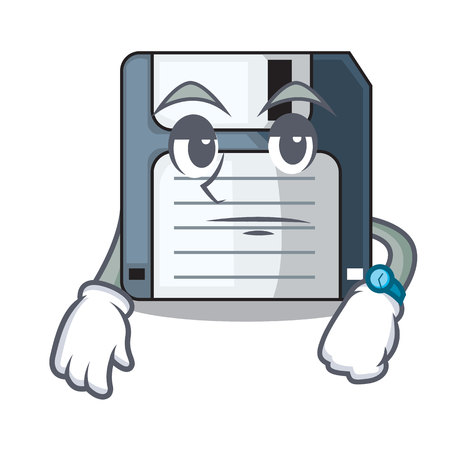1. Understanding Burnout in the U.S. Tech Industry
Burnout is a growing concern across many industries, but it takes on unique characteristics within the American tech sector. In simple terms, burnout refers to a state of physical, emotional, and mental exhaustion caused by prolonged stress and overwork. For tech professionals in the United States, this goes beyond just feeling tired; it can impact creativity, productivity, and overall well-being.
Defining Burnout in the Tech Sector
Within the fast-paced world of American technology companies, burnout often emerges due to long work hours, high expectations for innovation, and a culture that values constant connectivity. Unlike some other fields, tech jobs frequently blur the lines between personal life and work life—engineers, developers, and IT specialists may feel pressure to be available around the clock or deliver results faster than ever before.
How Burnout Manifests Among U.S. Tech Professionals
| Manifestation | Description | Common Example in Tech |
|---|---|---|
| Chronic Fatigue | Persistent tiredness not relieved by rest | Developers struggling to focus after weeks of overtime sprints |
| Cynicism or Detachment | Growing sense of disconnection from projects or coworkers | Engineers feeling indifferent about product launches or team meetings |
| Reduced Performance | Drop in quality or speed of work output | IT staff missing deadlines or making more coding errors than usual |
| Anxiety & Irritability | Increased stress reactions toward routine tasks or minor setbacks | Project managers snapping during stand-ups or being unable to handle feedback constructively |
| Lack of Motivation | No longer feeling excited about work tasks or new challenges | Product designers losing interest in creative problem-solving sessions |
The Unique Culture of U.S. Tech Workplaces
The culture in American tech firms often rewards “hustle” and long hours. Startups may glorify all-nighters while established companies offer perks like free meals—but these can sometimes mask expectations for extended availability rather than promote real work-life balance. Remote work has added flexibility but also made it harder for employees to set boundaries and truly disconnect from their responsibilities.
2. Root Causes of Burnout
Long Work Hours and Overtime
Many tech professionals in the U.S. regularly work beyond the standard 40-hour week. The expectation to be constantly available—especially with remote work and global teams—means emails, Slack messages, and late-night calls are common. This ongoing pressure leaves little time for rest or personal life, making it easy for exhaustion to set in.
Rapid Technological Changes
The tech industry evolves at lightning speed. Employees must keep up with new programming languages, tools, and best practices just to stay relevant. This constant learning curve can be exciting but also overwhelming, especially when job roles change quickly or when there is little support for upskilling.
Job Insecurity
Frequent layoffs, project cancellations, and shifting company priorities are all part of the tech landscape. Even at well-established firms, workers often feel their positions are unstable due to automation, outsourcing, or organizational changes. This uncertainty adds significant stress on a daily basis.
Workplace Culture
The culture in many tech companies rewards overachievement and “grind” mentality. Employees may feel pressured to compete with coworkers or prove themselves by working extra hours. Sometimes management overlooks the need for mental health support or work-life balance, further fueling burnout.
Main Factors Leading to Burnout in U.S. Tech Jobs
| Factor | Description | Common Signs |
|---|---|---|
| Long Work Hours | Regular overtime, always being “on call” | Fatigue, decreased motivation |
| Tech Changes | Need to constantly learn new skills/tools | Anxiety, feeling left behind |
| Job Insecurity | Lack of stability due to layoffs or shifting roles | Worry, reduced engagement |
| Workplace Culture | Pressure to overachieve; lack of support for well-being | Isolation, cynicism toward work |
The Bottom Line on Root Causes
The combination of long hours, rapid change, job insecurity, and high-pressure workplace culture creates a perfect storm for burnout among U.S. tech professionals. Understanding these root causes is the first step toward finding effective solutions that support both employee well-being and business success.

3. Consequences for Individuals and Organizations
Impact on Employee Well-Being
Burnout in the U.S. tech industry can take a major toll on employees’ mental, emotional, and even physical health. When tech workers are constantly under pressure, they often experience chronic stress, anxiety, and fatigue. Over time, this can lead to more serious issues like depression or burnout syndrome, which may require professional support. Burnout doesn’t just affect how someone feels at work—it can spill over into their personal lives, making it harder to relax, connect with loved ones, or enjoy hobbies.
Reduced Productivity and Work Quality
When employees are burned out, their ability to focus and perform at a high level drops. They may make more mistakes or have trouble solving problems that used to be easy for them. Innovation and creativity—key drivers in tech—can suffer as well. The table below summarizes some common productivity challenges linked to burnout:
| Productivity Challenge | Description |
|---|---|
| Decreased Focus | Difficulty concentrating on tasks or projects |
| Increased Errors | More frequent mistakes due to exhaustion or distraction |
| Lack of Motivation | Reduced drive to achieve goals or improve performance |
Higher Turnover Rates
The tech industry is known for its fast pace and talent competition. When companies don’t address burnout, employees are more likely to quit—either to join competitors, switch industries, or leave the workforce entirely for a break. High turnover leads to extra costs for hiring and training new staff. It also disrupts team dynamics and slows down projects.
Turnover-Related Organizational Impacts
- Loss of experienced team members
- Increased recruiting and onboarding expenses
- Delays in project completion
Summary Table: Key Consequences of Burnout in U.S. Tech
| Area Affected | Main Consequence |
|---|---|
| Employee Well-Being | Mental health struggles, stress, disengagement |
| Productivity | Poor focus, increased errors, low innovation |
| Turnover Rates | Frequent resignations, higher recruitment costs |
The negative impacts of burnout reach far beyond individual discomfort—they affect entire teams and organizations by reducing overall effectiveness and increasing operational costs.
4. Recognizing Early Signs of Burnout
Common Warning Signs of Burnout in Tech Professionals
Bustling work environments, tight project deadlines, and the constant drive for innovation have made burnout a prevalent issue in the U.S. tech industry. Recognizing early warning signs is crucial for both employees and organizations to prevent long-term harm and maintain productivity. Here are some common indicators that someone might be experiencing burnout:
| Warning Sign | Description |
|---|---|
| Chronic Fatigue | Feeling physically and emotionally exhausted most days, even after a full night’s sleep. |
| Decreased Engagement | Loss of enthusiasm or interest in projects, meetings, or team activities. |
| Reduced Performance | Struggling to meet deadlines, increased mistakes, or declining quality of work. |
| Cynicism or Detachment | Developing a negative outlook toward colleagues, clients, or tasks; feeling disconnected from the team or organization. |
| Irritability and Mood Changes | Becoming easily frustrated, impatient, or short-tempered with coworkers or clients. |
| Physical Symptoms | Frequent headaches, stomach issues, or other unexplained health problems. |
| Difficulty Concentrating | Trouble focusing on tasks, forgetting important details, or feeling mentally “foggy.” |
The Importance of Timely Identification
Spotting these signs early can make a significant difference. In fast-paced tech settings where everyone is expected to perform at their best, it’s easy to overlook subtle changes in behavior or mood. However, addressing burnout at its onset helps individuals seek support before problems escalate. Managers and HR teams should foster open communication so employees feel comfortable sharing their struggles without fear of stigma. Early intervention can lead to practical solutions—such as workload adjustments, mental health resources, or flexible schedules—that reduce stress and prevent long-term damage to both people and businesses.
5. Effective Solutions: Strategies for Prevention and Recovery
Flexible Work Arrangements
One of the most effective ways to address burnout in the U.S. tech industry is by offering flexible work arrangements. Many tech professionals feel overwhelmed by rigid schedules and long hours. Flexible work options, such as remote work, compressed workweeks, or adjustable start and end times, can help employees manage their energy and responsibilities better. These arrangements not only support personal needs but also foster greater productivity and job satisfaction.
Mental Health Resources
Access to mental health resources is essential for both preventing and recovering from burnout. Employers can provide Employee Assistance Programs (EAPs), counseling services, or mental health days to encourage workers to seek help when needed. Promoting open discussions about mental health reduces stigma and shows that employee well-being is a priority. Here’s a quick overview of helpful resources:
| Mental Health Resource | Description |
|---|---|
| Employee Assistance Programs (EAPs) | Confidential counseling and support services for employees and their families |
| On-site or Virtual Counseling | Professional therapy sessions offered at the workplace or online |
| Mental Health Days | PTO specifically designated for mental wellness without needing to disclose details |
| Stress Management Workshops | Training sessions focused on coping strategies and relaxation techniques |
Promoting a Healthy Work-Life Balance
A healthy work-life balance is crucial in preventing burnout. Employers can take steps like setting clear expectations about after-hours communication, encouraging regular breaks during the workday, and supporting vacation time without guilt. Employees should also take responsibility by prioritizing self-care, setting boundaries, and using available time-off benefits.
Tips for Achieving Work-Life Balance
- Set Boundaries: Turn off notifications after work hours and create a dedicated workspace if working from home.
- Take Regular Breaks: Step away from your screen every hour to recharge mentally.
- Pursue Hobbies: Engage in activities outside of work that bring joy and relaxation.
- Use Vacation Time: Take time off periodically to rest and return with renewed energy.
Action Steps for Employers and Employees
| Employers | Employees |
|---|---|
| – Offer flexible scheduling options – Provide access to mental health resources – Encourage breaks and vacations – Foster an open culture around well-being – Recognize signs of burnout early |
– Communicate needs clearly – Use available resources (EAPs, counseling) – Set personal boundaries – Take regular breaks – Seek help if feeling overwhelmed |
By taking these actionable steps, both employers and employees can help create a healthier tech workplace that addresses burnout proactively.
6. Building a Sustainable Tech Workplace Culture
Why Workplace Culture Matters in Tech
The U.S. tech industry is fast-paced and always evolving, making it both exciting and demanding. A strong, sustainable workplace culture isn’t just a perk—it’s necessary for long-term innovation and employee well-being. When companies prioritize people over constant hustle, they’re more likely to keep top talent, foster creativity, and reduce costly burnout.
Key Elements of a Supportive Tech Environment
| Element | What It Looks Like | Benefits |
|---|---|---|
| Work-Life Balance | Flexible hours, remote work options, clear boundaries between work and personal time | Lower stress, higher job satisfaction |
| Mental Health Support | Access to counseling, mental health days, open conversations about stress | Reduced stigma, early intervention for issues |
| Career Growth Opportunities | Training programs, mentorship, clear paths for advancement | Employee motivation, skill development |
| Diverse & Inclusive Teams | Hiring from varied backgrounds, promoting equity, supporting underrepresented groups | Broader perspectives, stronger teamwork |
| Recognition & Feedback | Regular appreciation of good work, constructive feedback sessions | Boosted morale, improved performance |
| Open Communication Channels | Transparent leadership, safe spaces for sharing concerns or ideas | Trust building, problem-solving efficiency |
Cultivating a Culture That Lasts: Practical Steps for Tech Companies
1. Prioritize Flexibility Over Rigid Policies
Let teams choose the schedules and environments that help them do their best work. Flexible policies support different working styles and personal needs—making it easier to balance life’s demands without burning out.
2. Make Mental Health Resources Accessible and Visible
Add mental health services to company benefits packages and regularly remind employees these resources are available—this helps normalize seeking help when needed.
3. Invest in Continuous Learning and Mentorship Programs
Create opportunities for upskilling through online courses or workshops. Encourage experienced team members to mentor newer colleagues. This builds community and gives everyone a sense of progress.
4. Build Diverse Teams Through Inclusive Hiring Practices
A broad mix of backgrounds brings new ideas and helps everyone feel they belong. Review job descriptions for bias and use diverse interview panels to make hiring decisions fairer.
5. Recognize Achievements—Big or Small—Regularly
A simple shoutout at meetings or a thank-you email can go a long way toward helping team members feel valued.
6. Keep Communication Two-Way and Transparent
Managers should share company updates openly and encourage honest feedback from all levels. Anonymous suggestion boxes or regular one-on-ones can make it easier for employees to speak up.
The Bottom Line: Culture Drives Innovation and Well-Being
A supportive culture isn’t just about making employees happy—it leads to better products, happier customers, and lasting business success. When tech companies invest in their people first, everyone wins.

